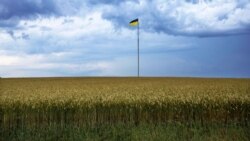With its vast, rich farmlands, Ukraine has been called the breadbasket of Europe. The country is so productive that it grows 40 percent of the wheat for the World Food Program, the biggest humanitarian organization on the planet and lifesaver for more than 100 million globally.
Well, that was until Russia’s war on Ukraine put the country’s grain output in jeopardy.
Under a safe-passage deal brokered by Turkey, about 720,000 tons of foodstuffs recently left Ukrainian ports. On August 20, that meager start earned praise from U.N. Secretary-General Antonio Guterres, but he also called for more access to Russian food and fertilizer.
The latter aren’t targeted by Western economic sanctions against Russia. Still, Guterres said Russian food and fertilizer were hobbled by a “chilling effect” that had made shippers, banks and insurers shy away.
The comment became fodder for a broadside from China Daily, the Chinese state-run paper.
“Since it is the U.S. that is weaponizing food, and profit from the practice, whether the world can avoid a food crisis next year largely depends on how cooperative the U.S. will be with the efforts of the U.N. and other members of the international community,” China Daily wrote.
The United States is far and away the biggest donor to the World Food Program. The idea that it is “weaponizing food” is preposterous.
True, global food insecurity is high, but not because of sanctions.
Rising prices and predicted shortages preceded the Russian invasion due to supply chain disruptions from the COVID-19 pandemic and drought in food-producing countries.
Russia’s war significantly raised the stakes.
The U.N. Food and Agriculture Organization (FAO) has estimated that 181 million people in 41 countries may face a food crisis or hunger this year.
Ukraine and Russia are both major exporters of food. Before the war, the two “accounted for 24% of global wheat exports by trade value, 57% of sunflower seed oil exports and 14% of corn from 2016 to 2020,” Reuters reported, citing the United Nations Comtrade database.
Russian troops now occupy large areas of Ukraine’s agricultural land. Ukrainian farmers have fled to join the armed forces and fight Russian troops.
Ukrainian officials have accused Russia of deliberately destroying of Ukraine’s agricultural infrastructure. CNN cited Vitaliy Kim, the head of the Mykolaiv regional military administration, who said that Russia shelled Ukraine’s largest grain storage facility in June.
Ukrainian officials also accused Russia of stealing Ukrainian grain in areas it occupied and selling the grain to Syria.
Although the Kremlin denied the allegation, “the leader of the Moscow-backed military administration for the occupied portion of Ukraine's southern Zaporizhzhia region boasted about train cars full of Ukrainian grain departing from the Russian-occupied city of Melitopol to Crimea,” CNN reported in June.
Satellite images showed Russian ships loaded with Ukrainian grain in the Crimean port of Sevastopol, and one of the ships subsequently arriving at a Syrian port.
About 400 million people worldwide rely on Ukrainian food exports, Al Jazeera reported, citing crisis management expert Anna Nagurney. Before July’s safe-passage deal, Russia had blocked access to Ukraine’s Black Sea ports. That left tens of millions of tons of grain and other farm goods stranded under threat of heavy Russian shelling.
A few days before the safe-passage deal, Russian President Vladimir Putin pledged to “facilitate the exportation of Ukrainian grain, but we are proceeding from the fact that all restrictions related to … the export of Russian grain will be lifted.”
However, Russian grain and fertilizers were not subject to U.S. or European sanctions.
The United States and Western allies banned Russian ships from their ports in April and May. Experts have argued that the U.S. ban was largely symbolic, given that Russian ships carried less than 1 percent of the cargo arriving at U.S. ports.
Ursula von der Leyen, the European Commission president, said Russia was the food weaponizer and that the poor and starving would pay the price.
"This is a cold, callous and calculated siege by Putin on some of the most vulnerable countries and people in the world,” she said in June. “[F]ood has become now part of the Kremlin's arsenal of terror, and we cannot tolerate it."
What about cooperation?
Despite his “chilling effect” remark, Guterres noted that the U.S. and European Union have been working with the United Nations “to overcome obstacles to Russian food and fertilizers reaching world markets.”
Bloomberg News reported in June that Washington was “quietly encouraging agricultural and shipping companies to buy and carry more Russian fertilizer … as sanctions fears have led to a sharp drop in supplies, fueling spiraling global food costs.”
And Russia exports aren’t down that much. “Total shipments this season are down only 14%, and wheat exports doubled in May, according to the country’s Grain Union,” Bloomberg said.
The China Daily spin on Western sanctions is in line with Kremlin disinformation, which has tried to divert attention from the costs of a war that has killed tens of thousands and created ripple effects affecting economies around the world.






